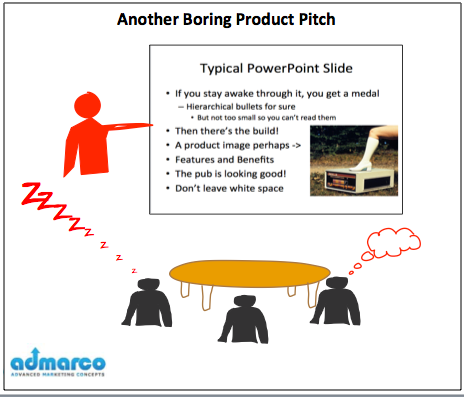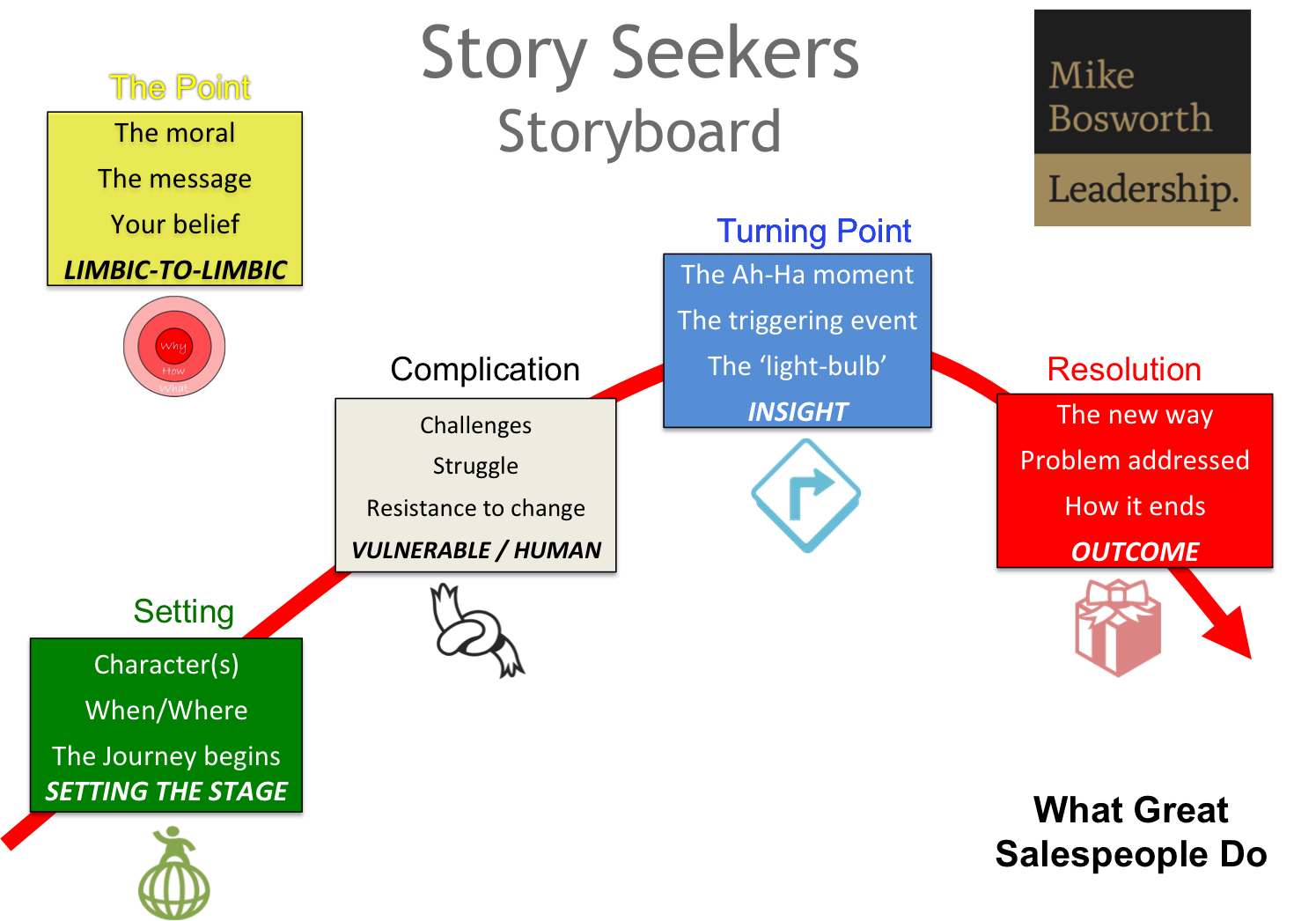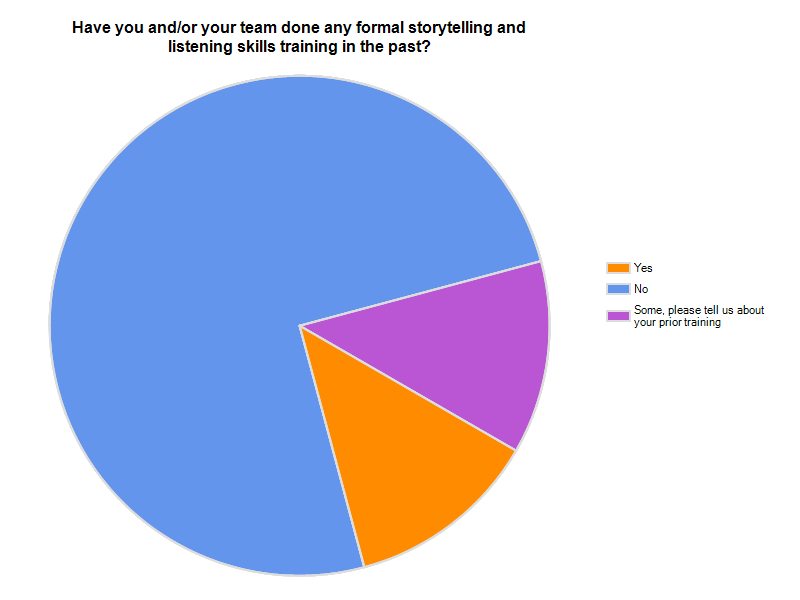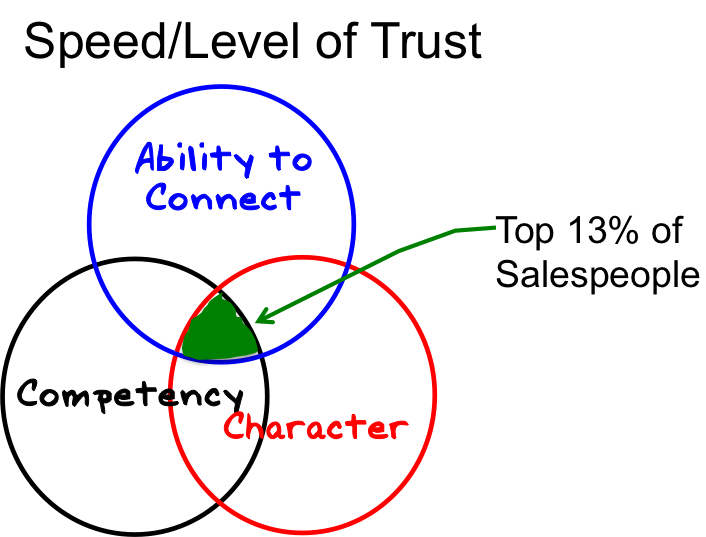Microsoft PowerPoint has been installed a billion times on Mac and Windows systems since launching in 1990. With an estimated 95% market share of the presentation market and more than 500 million users, Microsoft PowerPoint is a behemoth in the market and their collective competitors, mere minnows.
8 min read
Whiteboard Storytelling vs. PowerPoint - a Comparison
By Mark Gibson on Tue, Oct 01, 2019
Topics: storytelling powerpoint whiteboard storytelling baseline selling
4 min read
How Much Does a Whiteboard Story Cost to Create?
By Mark Gibson on Mon, Sep 30, 2019
People ask me this question when they are curious about creating whiteboards, and the truth is that it depends on your purpose and desired outcome. In this article, I discuss whiteboard types and their purpose and a process for creating a whiteboard story.
Topics: consultative selling challenger selling storytelling whiteboard storytelling commercial insight
1 min read
The Hero's Journey and Basic Storytelling - Video
By Mark Gibson on Wed, Oct 15, 2014
You can view other posts here
Topics: storytelling powerpoint the heros journey joseph campbell
1 min read
Your PowerPoint Presentations Suck Pt. 1 Visual Perception -Video
By Mark Gibson on Thu, Oct 09, 2014
If they look anything like the spoof slide below, then this series of three 10-minute videos will be of interest.
PowerPoint is ubiquitous, often maligned and most often misused... but as a presentation medium it has great utility.
We just need to get better at using PowerPoint and to improve the stories and visual elements that we use to create our presentations.
Your PowerPoint Sucks and what you can do about it
Part 1. Your Powerpoint Sucks - Visual PerceptionPart 2. The Hero's Journey and basic storytelling.
Part 3. Visual storytelling for salespeople
If you or your sales enablement or marketing team needs help with the underlying messaging and storyline to bring your presentations to life, please contact us.
Topics: storytelling powerpoint visual storytelling story
5 min read
Boring Your Prospect to Death? Revive them with a Story
By Mark Gibson on Thu, Jul 18, 2013
The subject of capturing proof points and formatting them to tell stories came up during the messaging workshop and I want to use a story to illustrate the point of using a storytelling and to describe the discrete steps in the storytelling format. I partner with Mike Bosworth and use his Story Seekers method in formatting and telling stories. The format is universally understood and follows the basic "hero's journey" format that powers so many of the scripts in our popular film culture.
The people in the company I'm working with are World-class thought leaders in their field, they have a great product for a well-defined niche, but they are struggling.
Their messaging clarity was 3/10 and their website unclear and they got few inbound leads. Like many other emerging technology companies, they were using outbound cold calling and spamming lists to generate interest and not surprisingly had very little success.
An additional problem was that the few leads they got often proved to be unready for sales contact. We ( Kuno Creative and Admarco) were hired to help clarify their messaging and to transform their Website and implement an inbound marketing methodology.
After clearly identifying their capabilities or Win-Themes and applying them to their Buyer Personas in the messaging workshop, I asked a couple of the top salespeople to role-play with me around the buyer persona issues, using the capabilities we had developed.
What happened next is happening in sales teams all over the World and explains why so many salespeople are struggling. They have plenty of success stories or proof points, but they don't have the stories in a usable storytelling form … and salespeople don't have the skills to relate their story.
(The barrier or status quo in the last sentence is the fact that they don't have the stories in a usable form – at their fingertips; the complication is that they don't have storytelling skills - even if they had the stories.)
But let me get back to the story and role-play.
- Their salespeople who know so much about the problem proceeded to tell me what I needed (to use their product), - I immediately felt my personal space being invaded when being told what it was that I needed to do and I felt like I wanted to push the salesperson away. It felt like I was being sold and I pushed back hard and gave them an objection, I felt I was under pressure - like every buyer does. No-one likes being sold... it's offensive. ((Telling is the STATUS-QUO delivery mode and a BARRIER to success for most salespeople))
- The other issue this sales team has is that their market has nuances that are subtle and they cannot be 100% sure they are "on-message" when making a recommendation – because typically they are premature in making it. Salespeople who have seen the problem dozens of times before, often can't wait until they fully understand the buyers story, before suggesting a solution. This is also known as premature elaboration. ((Market nuances are the COMPLICATION))
Storytelling Stucture
1. We reversed the roles and I played the role of the salesperson and asked if I could share a story of how we had helped another VP in a similar company (same role) to solve a similar problem. SETTING.2. I described the status quo - they had Oracle and lot of reporting tools to do the job… but the barrier was that they couldn't see the problem with their existing tools, despite having spent a lot of money on technology and decision support. STATUS QUO/BARRIER - Setting the Stage.
3. I then introduced the complication, which meant that because managers couldn't see the problems in their standard reports, they had to work Sundays to prepare for Monday morning meetings using a data dump and Excel to try and spot the problems. COMPLICATION/Constraint + vulnerable/human… we can relate to the pain of working Sundays.
4. Next I introduced the unique product capability and our insight which helped to identify the problem and show the customer how they could use our tools to see the issues and take action to solve the problems. TURNING POINT.
5. They adopted the solution and now the problems are made visible in reports that we generate automatically from our system and managers get to share Sundays with their families. RESOLUTION.
6. To add concrete evidence, I used the quote about the impact of the software on productivity extracted from a CEO's Quarterly Wall Street briefing = OUTCOME.
This was a watershed moment for my client and the sales team.
Summary
- Stories give us the natural ability connect emotionally with buyers in a non-threatening way and to accelerate trust.
- Stories need tension and emotion/vulnerability to connect emotionally with buyers.
- Stories are boring without emotion and contrast to bring them to life and are quickly forgotten.
- Salespeople need to be prepared to be vulnerable and go first with a story and then to carefully "tend" or listen to the buyer’s story.
- The “Who I’ve Helped Story” starts with the setting and introduces our buyer and the status quo.
- The journey begins with Barriers that describe what's preventing the buyer from achieving their goals.
- Complications/constraints are emotional factors that bring our story to life and give it tension through struggle, resistance to change and ultimately this is the point of human connection.
- The turning point is the insight we bring with our expertise and the use of our software to help the buyer see the problem in a new light.
- The resolution is the successful outcome and if possible, some hard ROI evidence
- Stories are the most powerful connective link between salespeople and buyers to convey insight in a way that buyers want to receive it. Just about everything else can be gotten from the Website.
Conclusion and Calls to Action
Storytelling is not yet mainstream and too "touchy-feely" for most mainstream sales leaders. Individual salespeople and early adopter sales leaders looking for competitive advantage in how they sell could start their journey by;i. Aligning sales and marketing messaging to clarify their value proposition,
ii. Capturing and formatting their "Who I've Helped Stories" in the above manner, and placing them in the hands of salespeople when they need them.
iii. Training sales people in storytelling.
Topics: sales & marketing alignment messaging workshop storytelling
4 min read
Life after Powerpoint - Using Stories for Engagement
By Mark Gibson on Tue, Jun 25, 2013
The night before the messaging workshop my client requested that we use a different approach to creating the messaging, which made my PowerPoint deck redundant. Fortunately the client had a whiteboard and a flip chart handy.
Starting a Meeting with a Story
To kick off a 3-day workshop, I still needed engagement and buy-in from the audience. My sponsor in the messaging workshop and I had worked on a similar messaging and sales enablement project several years earlier, which was transformational for his company and he introduced me and told his version of the "Who I've Helped Story" of our prior engagement, from the customers point of view, which was fantastic as this story is always more powerful coming from the customer, vs. the supplier.Since many of the participants did not know me, I started with my "Who I Am" story. In 90 seconds I told the story of the past 10 years of my professional life as a consultant. It wasn't a story about how fantastic I am - it was about the journey, the struggle and the lessons learned, that give me unique insight.
- In 2003 I was staring down the barrel of a 2nd lay-off in 2 years. (setting stage & vulnerability)
- Realized customers had changed and I hadn't. (journey begins)
- Didn't have 20 years selling experience - really had 1 year experience repeated 20 years over. (vulnerability)
- Started a search for new ideas, journey of discovery - (call to adventure)
- (Joke) My wife heard me practicing my story - she said "keep looking" (humor)
- Moved to UK, started a sales training consultancy (transition)
- First graduates could get meetings with CXO's, but when they got there would revert to "product-speak" - Realized they needed messaging to help engage buyers around their issues. Started messaging which has been a part of every engagement since. (struggle + Insight)
- In 2008 we had customers, but no leads - introduced to HubSpot and started creating content and generating leads and has become a part of our DNA. Messaging now used to drive content marketing. (experience + lightbulb moment)
- 2010 relocated back to USA and met Corey Sommers at Whiteboard Selling, invited me to work with him to use my sales training experience and messaging skills to create visual stories. (relevant experience)
- 2013 connected with Mike Bosworth and learned story telling, come full circle - that's why were here - capture your message so everyone can tell your story. (call to action and resolution)
Using a Curiosity Hook for Enrolment
After I told my "Who-I-am" story, I drew three large numbers on the flip chart.I asked the audience what they thought the
Then I revealed the question mark with a question ...How clear is your sales team in positioning the value of your technology solutions on a scale of 1-10, where 1 is terrible and 10 is crystal clear.
The final number 10% had everyone stumped. This is the percentage of sales meetings with salespeople that buyers rate as actually worth having, where the vendor brought insight to the table.
If you are interested in learning to tell your story in an engaging manner and in more effectively listening to the buyer as you tend their story, you are invited to join us at the forthcoming Open Storyseekers workshops in Seattle.

Topics: mike bosworth sales training marketing messaging storytelling
5 min read
Revelations on Story Telling - Survey Results
By Mark Gibson on Tue, Jun 11, 2013
Topics: mike bosworth storytelling visual storytelling
4 min read
Why Salespeople Fail- Failure to Listen & Premature Elaboration
By Mark Gibson on Tue, May 21, 2013
I cannot easily summarize the 2.5 days in 600 words, but I can give you a couple of core ideas.
I've been a Mike Bosworth fan since I read Customer-Centric Selling in January 2005, but I had not read his prior work, “Solution Selling” published nearly 30 years ago, based on his experiences at Xerox and involvement in the SPIN project. Mike was one of the most successful reps in Xerox history at the time and gained much experience in selling, managing and training salespeople before most of us started our sales careers.
While reading his latest book, co-authored with Ben Zoldan, entitled, "What Great Salespeople Do", I could feel myself nodding as I could either see myself in the stories, or agreed with his ideas and training philosophy.
One of Mike’s startling revelations in the opening of the training course is that after nearly 30 years of sales training in both Solution Selling and Customer-Centric Selling (and most of the other mainstream sales methodologies), not much has changed for the bottom 80% of the sales force, who sell 20% of the revenue.
The outcome of these training courses was that the best salespeople got better from using the techniques and processes, but the core group typically stopped using the techniques within a month or two of the training and reverted to prior behavior. Mike points out that in fact the old 80/20 rule is no longer true in fact it’s now 13% of salespeople selling 87% of the business. (Sales Benchmark Index)
Why?
The answer to this question is not masterful use of the CRM system; adherence to the 9-box questioning model, or the number of connects per day or the ability to dazzle with presentation and demonstration skills. These are table stakes in the old process oriented, logical “left-brain” training paradigm for sales professionals.It turns out that great salespeople are able to forge strong emotional connections with buyers, either through a natural or learned ability to quickly create rapport, listen empathically and connect emotionally with buyers, typically through story.
Top salespeople are able to connect emotionally with buyers quickly, which the Franklin-Covey organization refers to as “speed of trust”. This is one of the most critical skills in today’s buyer-seller relationship, where the salesperson’s “at-bat” opportunities are fewer and meeting duration is shorter.
Status-quo thinking with sales leaders is that right-brained empathy and rapport skills can’t be taught. “It’s too touchy-feely for our hard-bitten sales team” We are looking for sales leaders who are willing to challenge that belief, who understand that these skills are probably the most important and most underdeveloped in the core group.
Storytelling is as old as mankind and no one ever turns down an opportunity to hear a good story. When you tell a story and expose your vulnerability in the process, you invoke a reciprocal emotion in the listener and create an opportunity to tend (draw out) the other-person’s story and this is what builds trust. This is not a story about how great you are as a salesperson; how big your company is, or how wonderful your products are. These are the stories most salespeople are telling today to buyers who haven’t asked to hear them - most of the time.
Truly listening to the other person, reflecting their words and emotions, (without thinking about what you are going to say next, interrupting, mentally counting the commission, or trying to qualify in or out), is a skill and it can be learned and mastered with deliberate practice.
Mike used an expression “premature elaboration” to describe how salespeople - who are experts in their field and familiar with the buyer situation are too keen to tell the buyer what they need.
Neil Rackham created an expression that still holds true today as a result of his research in the SPIN project.
EXPERTISE + ENTHUSIASM = ENEMY.
This is premature elaboration and most of us in sales have been guilty of it at some point in our careers. If you put yourself on the buyers side of premature elaboration, it feels like you're being told and then sold and that's what gives salespeople a bad name. Learning to truly listen and tend the buyers story will help you to learn more about the buyers issues before you offer your solution.
The Story Arc
We created and learned to tell three stories in the workshop;- Who Ive helped,
- Who I am,
- Who I represent,
All stories we created follow a similar story arc and we used this story format to tend the stories of others. On the evening of the 2nd. day, our homework assignment was to call someone we love and ask them a question and tend their story using the skills we had learned in class and the story arc to help tend the conversation. I called my 17 year old daughter, Olivia and we had a conversation for about 40 minutes, unlike any we had had before.
We are looking for early adopters in sales leadership willing to pilot a Story Seekers Storytelling workshop for struggling reps who they would hire again (competent + character).
Join us for a live Storytelling Webinar with Mike Bosworth

Topics: mike bosworth story seekers sales enablement storytelling
4 min read
Using Stories for Sales Engagement - What Great Salespeople Do!
By Mark Gibson on Thu, Dec 27, 2012
When Mike stated recently that the old stuff isn't working any more and moved away from these generally accepted sales process models to start an entirely new business to teach salespeople to tell stories, I took note and I bought his new book, What Great Salespeople Do.
One astonishing statistic published in the book reveals the unfortunate truth in the sales profession and that is, now just 13% of salespeople are responsible for 87% of the revenue (*Sales Benchmark Index). This led Mike to the realization that despite decades of conventional sales training, the core group of salespeople had not improved their performance. That is, decades of sales training made the best salespeople better, but the bottom 80% did not improve. On closer examination of the 13% who were selling 87% of the business in his own organization, Mike found that they all had the ability to forge real emotional connections with their customers.









